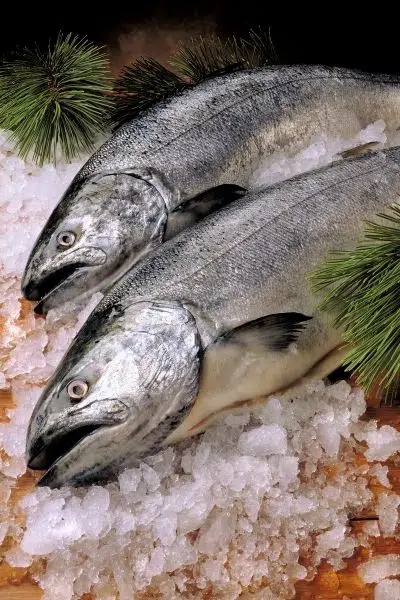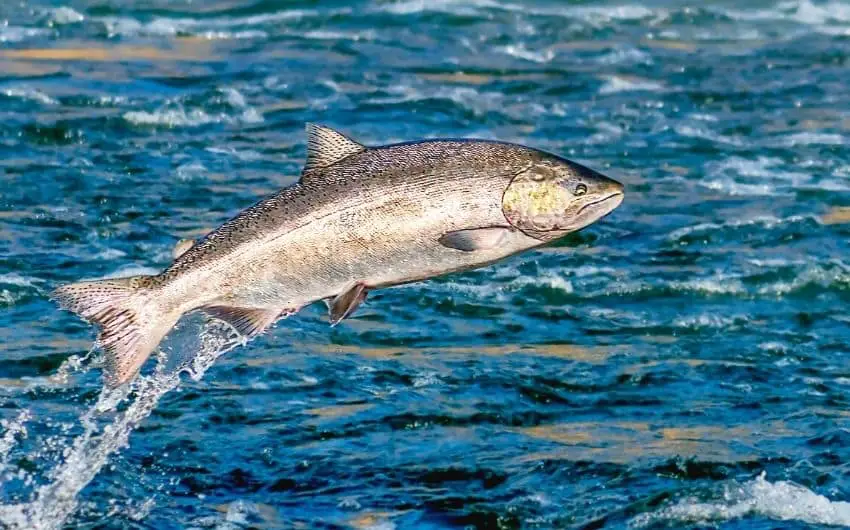Silver pacific salmon is the world’s healthiest and best-tasting wild salmon.
The salmon industry in the United States is currently facing a crisis. There has been a significant shift in consumer demand for sustainable seafood, but there is still no clear definition of what “sustainable” means.
In an effort to address this issue, several organizations have created their own standards and certification programs that they claim will help consumers make more informed decisions about the seafood they purchase.
However, these different labels can be confusing and misleading to consumers who want to support sustainable fishing practices but don’t know-how.
Silver pacific salmon is 100% sustainably caught by American fisherman from Alaska’s pristine waters using hook & line techniques only (no nets).

It’s also certified by both MSC (Marine Stewardship Council) and ASC (Alaska Seafood Certification Program), which are two of the most widely recognized certifications for sustainable fishing practices on the market today. This combination makes silver salmon one of the best choices available.
Quick Jump
ToggleWhat Are Alaska’s Five Species Of Pacific Salmon That You Should Know?
There are five species of Pacific salmon found in Alaska. They are
- King (Chinook)
- Sockeye (Red)
- Silver, Coho salmon fish
- Silver/Blue salmon
- Chum Salmon.
King Salmon: Also known as Chinook Salmon, Kings have a dark green back and silversides. They typically spawn every other year. King Salmon is the biggest of all species of salmon on the pacific ocean, reaching an average size of 30 to 65 pounds with extremes up to 200 pounds or more.
Kings spend one to three years in freshwater before heading out to sea and can live up to 10 years in the ocean. Kings are found around Alaska’s islands and along the Alaskan Peninsula through southeast Alaska and as far north as Point Hope in the arctic.
King Salmon reaches a market size of 15 to 18 pounds. Of all the salmon species caught in Alaska, 20% of them are Kings.
Why does silver pacific salmon have silvery skin?
Silver salmon have a lighter body color, which is meant to blend with the sand and gravel where they spawn.
They look very much like King Salmon, only they are smaller and have a darker back with silver sides and a white belly.
Sockeye Salmon: Also called “Bluebacks,” they are recognized by their deep blue color with silver sides and bellies. Sockeye reaches an average size of 8 to 10 pounds.
Sockeye salmon are found in streams, rivers, and lakes throughout most of Alaska but are abundant in Bristol Bay. They return to freshwater to spawn once after spending 3 or 4 years at sea.
Sockeye salmon are the only species of Pacific salmon known to die after spawning, but their eggs hatch at a high rate.
Silver Salmon: Also called “Silvers,” they are recognized by their silver color with greenish backs. They reach an average size of 5 to 7 pounds.
How long can a silver salmon live?
Silver salmon are the first to return to freshwater after spending 1 or 2 years at sea. They can be found in Washington’s Puget Sound, B.C.’s Fraser River, throughout Southeast Alaska, and Bristol Bay.
Silver pacific salmon vs. Atlantic salmon: What’s the difference?
Atlantic Salmon: Also called silver salmon “Sea-Run Browns,” they are recognized by their brown (or greenish) color with silver salmon sides. They could grow up to 30 pounds but are often caught between 10 and 25 pounds.
Atlantic salmon begin their spawning runs at 3-5 years old, while Pacific salmon spawn at 2-4 years old.
Atlantic Salmon are found primarily in the northern reaches of the Pacific Ocean from the Bering Sea to the Alaska Peninsula and down the coast to California.
Pacific salmon is also called pacific coho salmon. The different species of pacific salmon are Chinook, Coho, Chum, Sockeye, and Silver (also called coho).
Final Thoughts
In conclusion, understanding the difference between different types of salmon and labels can be a confusing process. If you want to support sustainable fishing practices but don’t know how choosing Silver pacific Salmon as your product may be a good choice for you.
Not only does this type of salmon have an excellent sustainability record with MSC certifications (Marine Stewardship Council) and ASC (Alaska Seafood Certification Program), but it also tastes delicious!
You might also like:

